-
Posts
556 -
Joined
-
Last visited
Content Type
Profiles
Forums
Gallery
Events
Posts posted by niwotwill
-
-
Well I'm back after a long break. Finished rigging my Morgan. Moved to a new house and now during the quarantine I've been able to get some work done on Syren. Finished up the ports and planking along with the transom and counter. I followed Gahms transom planking to give a more detailed look. Thanks Thomas for your posts.
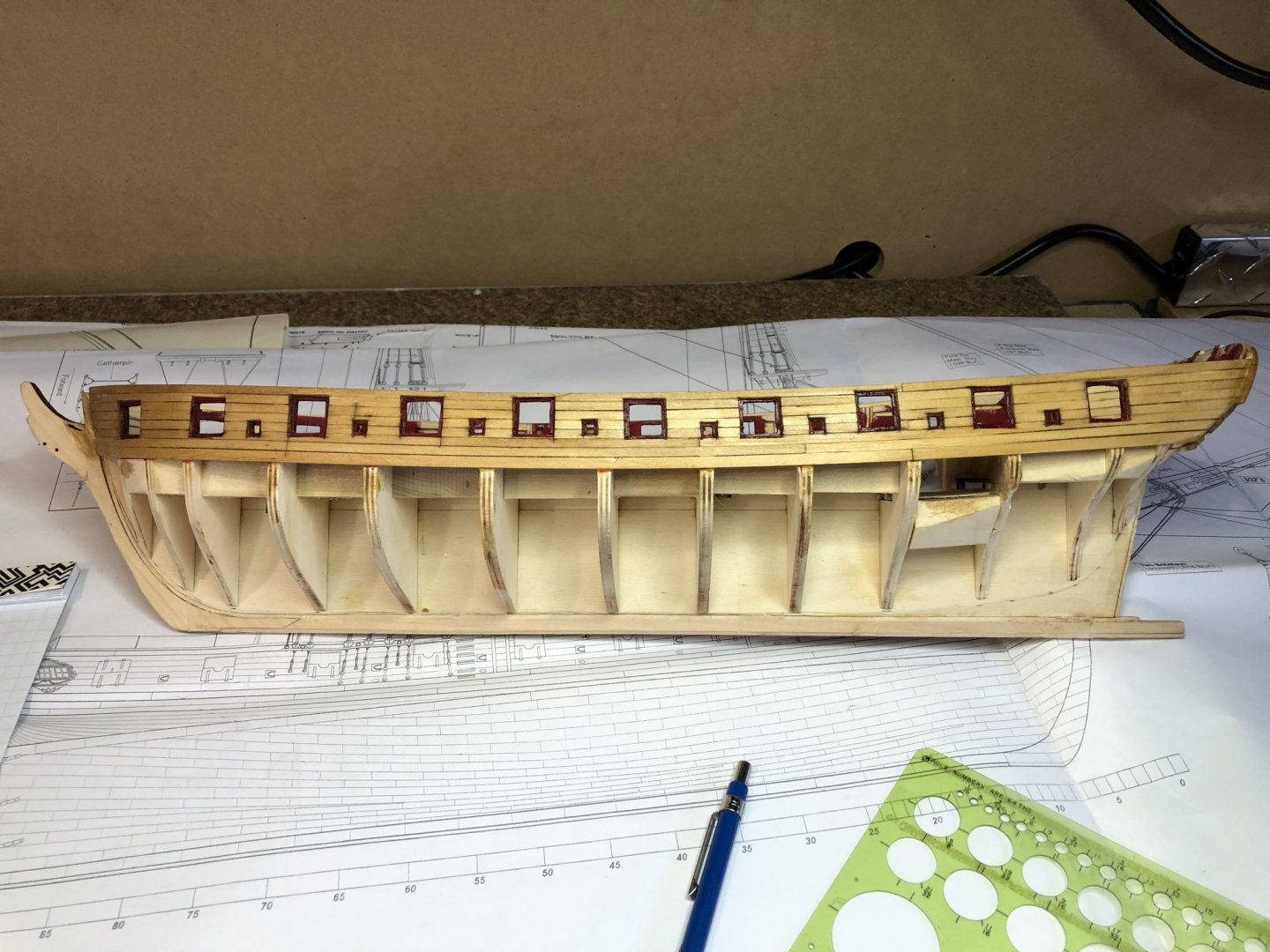
I used a darker vermillion as I wanted a different contrast between the planking stain and the red vermillion. Now I'm off to starting hull planking and trying to make real sheaves for the back stay to pull through.
- Edwardkenway, GrandpaPhil, Voyageur and 2 others
-
 5
5
-
-
Been following your build throughout the process and its looking very very very nice. Im designing the Pungy Amanda F. Lewis, plans from Smithsonian, on TurboCad and you've given me many ideas. While reading your last post I remembered I.ve made similar parts using brass beading wire, hobby lobby, of .02 did wire which results into .96 dia. For the small i.d. I wrapped the wire around a #56 (.043) drill bit held in a vice and made a loop of the wire held in a pin vice and twisted the wire forming the loop. The wire work hardness during the twisting.
Again model looks great really enjoy your posts.
Will
- mtaylor and FriedClams
-
 2
2
-
-
Thank you Ed for the quick response, I checked online and found 1/2" X 2' X 4' at Menards for $11.96 and they will ship to my home in Queen Creek. Home Depot & Lowes carry a sound barrier foam board but they are not the same as Homasote. Again thanks now I'll continue with my TurboCad database of the schooner Lettie G. Howard from the HAER drawings. I'll use your approach to test my lofting and your assembly methods before I get too far down the road.
Will
-
Ed
I just finished going through your Young America log and found the work and log to be truly amazing and I can't thank you enough for your contributions to the MSW. There is so much information in the log that Ive made a excel spreadsheet to use as an index to help me find any particular item I need to review and am using it now to review your frame making tutorial, but have one question What type of board do you use to pin the frame pieces too? I tried MDF with no results.
Again thank you for all you do.
Will
-
I like you stanchion alignment very ingenious for drilling the turned stiles you bought. For your reference I'm building a pattern follower for my lathe using David Antscherl's plan on HMN Swan Class Sloops volume 1 page 288 I'll let you know how it works.
C. Chase is looking really great and I especially like the centerboard.
Will
- mtaylor and FriedClams
-
 2
2
-
Yahoo! I got my wood late yesterday and inspected and measured each piece for imperfections, grain, color, size and flatness. I am very happy with the quality of the wood the grain is very tight and straight and the color is very uniform so after ripping and milling the sorting for planking uniformity will be very easy. I only milled enough for the wales, bulwark, and deck planking so now I started installing the first wale layer and next will be the acid test as I start the bulwark planking and fitting/trimming the sills around the gunports and sweeps. Once the wale glue is dry I'll start the bulwarks. Now I'd better get back to rigging the Morgan. Its getting close so I need to stay after it.
Oh yeh, I've posted of the alaskan yellow cedar and basswood strips for you comparison. The cedar is on top
Still more glue left from removing the planking done earlier. Just a lot of fine sanding but the old glue comes off fairly easily and leaves the surface ready for the new pieces. I really had no problems getting the surface ready for the wales hoping the rest goes as easily.
Till next post
Will
- Overworked724, Mahuna, GrandpaPhil and 2 others
-
 5
5
-
Thanks for the comment Jonathan and everyone else for the likes
Well another day spent de-constructing a model. I got all the bulwark strakes and the first wale off with not problems, just time to soak with water. The PVA glue became a rubbery layer of somewhat sticky goo which enabled me to just gently pry up the pieces and the slowly lifted off in one piece. Just took time to soak. I worked on my Morgan rigging while waiting for the soaking still a good day of modeling. I did find one good attribute of basswood during this process and that is it is so soft and porous that it soaks up the water and holds it in place while the PVA softens other than this I don't like the stuff and will never use it again.
Now I just need to wait for my Alaskan Yellow Cedar to arrive and I can start ripping and milling to 5/32" x 1/16" and 1/8" x 1/16" strips. Waiting is the hardest part as the song says.
Will
-
Been awhile since last post but I have been working of the first wale and then starting the bulwark planking. Pictures to follow. When I needed to start cutting the plank around the gunports and sweeps I ran into problems. I have tried and tried to cut the gunport lid sills as described in the manual but can get the cuts as clean and straight as I'd like. No matter what I use if I put too much pressure while cutting the wood starts to crush and not make a clean crisp cut. I use a new #11 blade for each cut and it still is not as I'd like. What I've found is that the basswood does not carve like a hardwood and carving is really what needs to be done on the bottom and top edges so you have a clean crisp straight cut for the sill. The fore and aft edges are much easier since the cut is against the wood grain so the cuts are fine BUT the end grain is problematic since it is so coarse that you can see and and I can't imagine what a stain would do with the open grain. ugh! And then trying to keep the sill less that 1/32" perimeter is very trying. So I took everything off and will start again with harder wood. Chuck has been really talking up yellow alaskan cedar so what the heck I tried some I had around and found it to be much superior to basswood and have ordered enough to plank the bulkheads. I hope it works as well as the little I had to try in my experiment. Let you know when I get my delivery and get it ripped and milled to the correct size next week.
Bye for now
Will
and thanks to everyone for my thanks.
PS I forgot to mention the wood in its many shades of yellow, tan, or grey. I realized the I'd have to sort the kit wood for each area that was going to be stained and not painted. Look at the pictures and you'll see the different colors of the basswood.
-
Very nice Maury. I've been following your log and now started to follow with MSB so I get your updates on a regular basis. I'm using TurboCad to develop plans and loft the brigantine Leon from Harold Underhills plans but with so many copies of copies of copies the plans are quite unreliable as the waterline have become blurred. I friend of mine has suggested my starting a pungy she schooner from plans he bought from Mystic Seaport years back. So I'm very interested in your model and the research you've put into getting a very nice model.
Great looking model the scale really shows the models construction details.
Will
- mtaylor and FriedClams
-
 2
2
-
Paints dry and now onto first wale. I used a 1/8" strip that i'd bent to fit the shape of the deck plan to determine if my construction matched up with the laser marks on the frames. With the battens on I looked at the line from all directions, felt it looked good and went to lunch and a swim. Came back in much refreshed and the battens didn't look as good as I first thought, so I took the pins out and moved the middle up until the run looked good from all angles. Checked the the batten to the laser marks and sure enough the marks on frames 6, 7, 8 & 9 were approximately 1/32" lower than my batten top. Question, question, and question where was the difference. I took 7 pieces of 1/8" strip and glued the together like the planking will be, using the jig of strips I started moving down the sides to see if the jig aligns with the top of the wale and the top of the bulwark. It aligned perfectly along the entire length of the batten, so!!!!!! I guess its correct. Went back and checked everything again with the same result. Being a retired engineer (I know an electrical one but still and engineer) as the saying goes "there comes a time to shoot the engineer and go to production". I put the wales on.
Wale photos to follow
Will
- J11, Edwardkenway and Mahuna
-
 3
3
-
Painted the gunport and sweep ports with sanding sealer and then used 400 girt wet and dry to smooth the insides of the ports prior to painting. Spent a fair amount of time cleaning the surfaces to be painted by vacuuming and then wiping with new tack rags to get all the dust and debris off before painting. I'm painting with acrylic paint and am using Winsor & Newton Professional Acrylic on my models. For the red color I'll use vermillion straight from the tube and thinned very little. I really like the color with the contrast with golden oak stain and black trim, pops nicely but not too bright. I'm going to use english holly on the deck with a diluted golden oak stain to give a golden bleached look. Can't wait to see, but first things first.
-
Getting ready to start hull planking as described in chapter 5. First thing is to paint the gunport and sweep port frame linings vermillion red. Sanding them out to prepare for painting I remembered something I read somewhere "PHOTOGRAPHS SEE AND REVEAL EVERYTHING" so I took closeup photos of gunport and sweep ports and boy what a mess. I then spent the rest of the day filing out each port using small swiss cut files. Take a photo, file more, photo, file more until satisfied.
After all completed I'll paint with sanding sealer and check again tomorrow. Thing to remember is PHOTOS REVEAL EVERYTHING.
Will
-
Got stern gunports installed using the same 15/32" square tool used on the port and starboard gunports. Counter filler blocks installed without incident. Marked the bulwark fairing on the outside counter as described in the manual using a wood strip. Faired the counter to the bulkwarks and the counter frames, what was amazing was that I did this without breaking one of the frames. Man are they fragile.
- GrandpaPhil, Edwardkenway, Mahuna and 1 other
-
 4
4
-
- Ryland Craze, Edwardkenway, Mahuna and 2 others
-
 5
5
-
-
Mike
i read your entire log and now I’m getting ready to start my galley. Still trying to decide on which wood type to use when picked I’ll then rip and mill to size. I think I’ll start my log when I order my timber.
i love your work and have one question, oh maybe more but one for now. Did you use silver solder on the stove? Ok another question what silver did you use sheet, wire, or paste?
your work is amazing and something to try for
Will
-
I’ll check this out tomorrow
thanks
-
Chuck when I downloaded the drawings I see that they are 1/4" scale but I don't see a scale on the drawing that can be used to verify printing accuracy and such. This is very helpful to those who are scratch building the Winnie. Could you put a scale on the drawing for us to use?
Will
-
Thanks Svein Erik. What did you use for the filling blocks?
-
Yesterday spent placing sweep ports and fairing the sides. I used the same method to get the sweep ports 1/8" square. Ripped a 1/8" strip from a 1/8" boxwood sheet and placed it across the breadth of the ship to align the sweep ports. Next step is on the section 4 of the plans. I still have to test staining and then stain the lower deck.
It'll be a couple weeks before I post again as I'll be traveling.
Will
-
More time spent rigging Oh due my finger ache so onto gunport sides. To place the sides I used the plans to mark the location and my jig to insure they'd be 15/32" wide. Fairing the outside and inside took almost a day of carful sanding. I do like this soft wood it's so easy to sand, but also so easy to go to far.
- Zarkon, GrandpaPhil, Edwardkenway and 2 others
-
 5
5
-
Been to long between posts, as said I'm rigging my Morgan, so I've completed the bulkhead reconstruction. I hate reconstruction almost as much a deconstruction. Spent a day putting the gunport sills in on the starboard side until I realized that I'd read the instructions incorrectly. I'd placed the 1/4" side in the vertical position and the 3/16" side in the horizontal position. Breakout the acetone and soak each glue joint another day spent doing deconstruction. Cleaned up the bulkheads from glue residue and then realized that I might not have enough 3/16 x 1/4 material so I measured and measured and read ahead to see where else I'd need the 3/16 x 1/4. I think I'll have enough. WHEW
On to putting the sills in. No more problems. First time a learning lesson. Faired the sills to the bulkheads very carefully, no more broken bulkheads. On to the lintels with no issues. Faired the lintels to the bulkheads with no more breaks. The bulkheads are now quite strong.


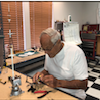

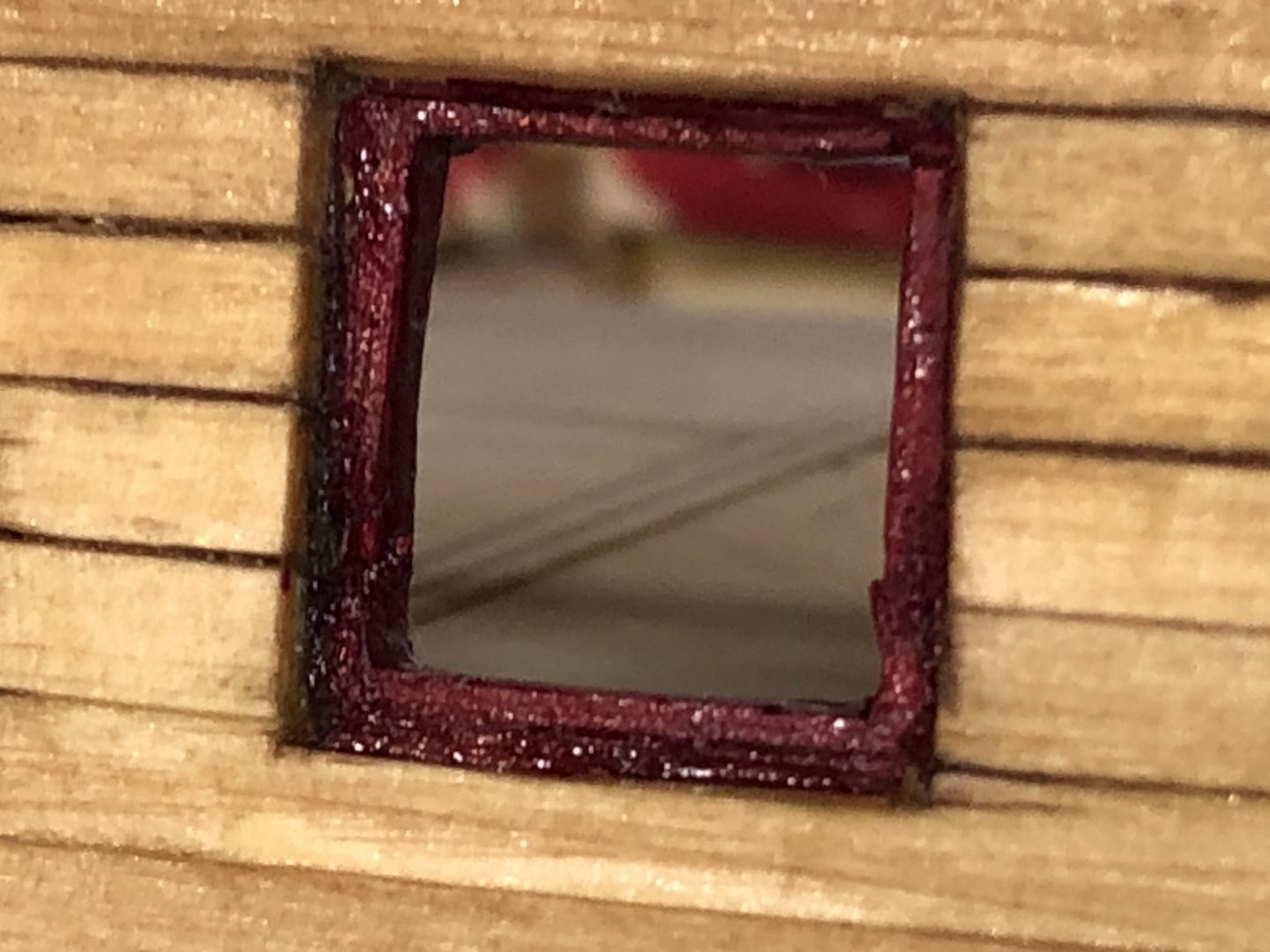
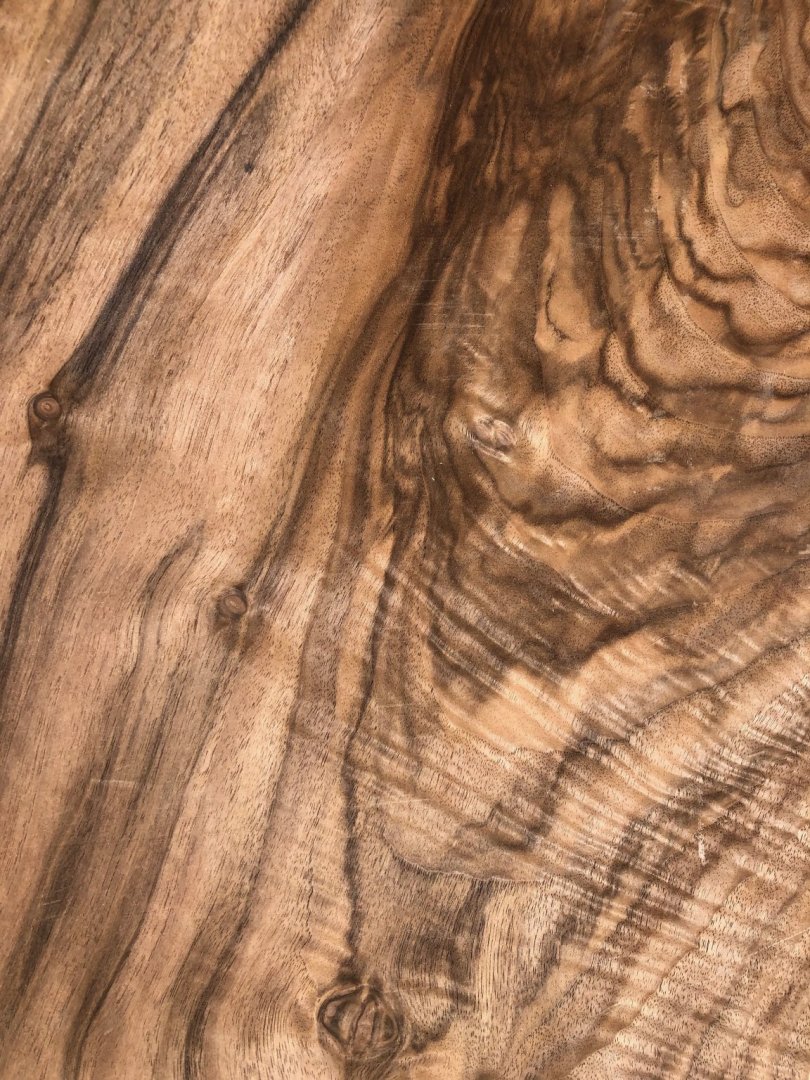
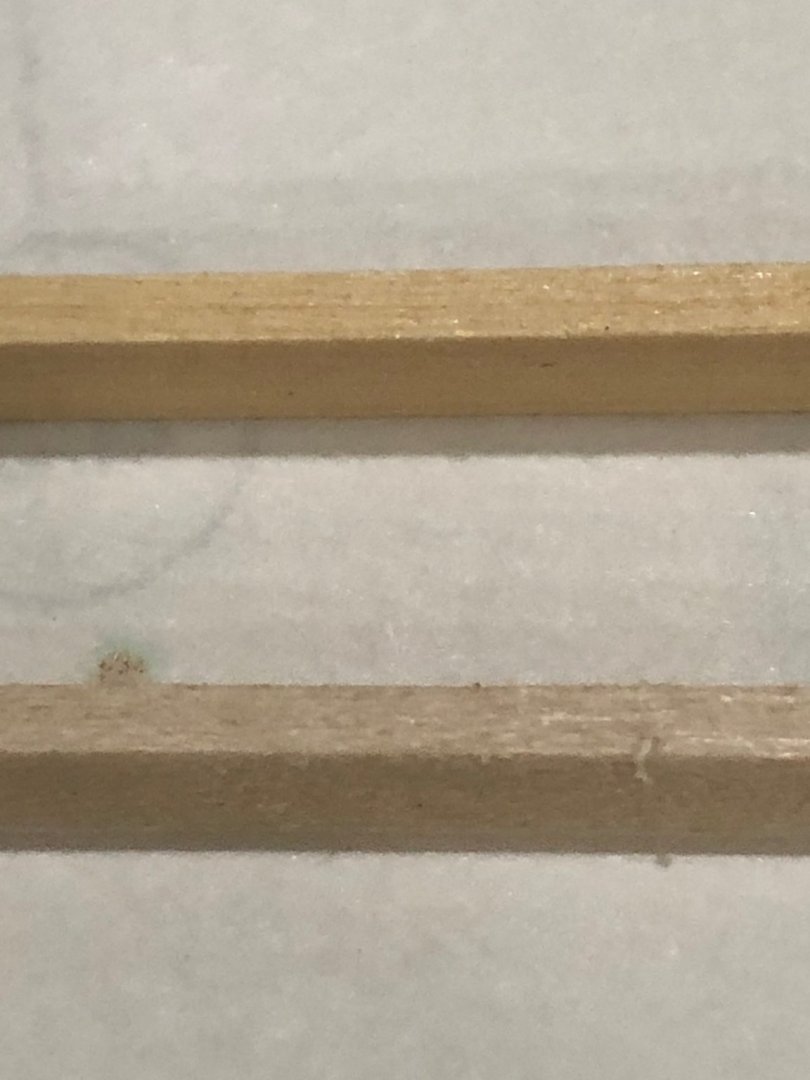
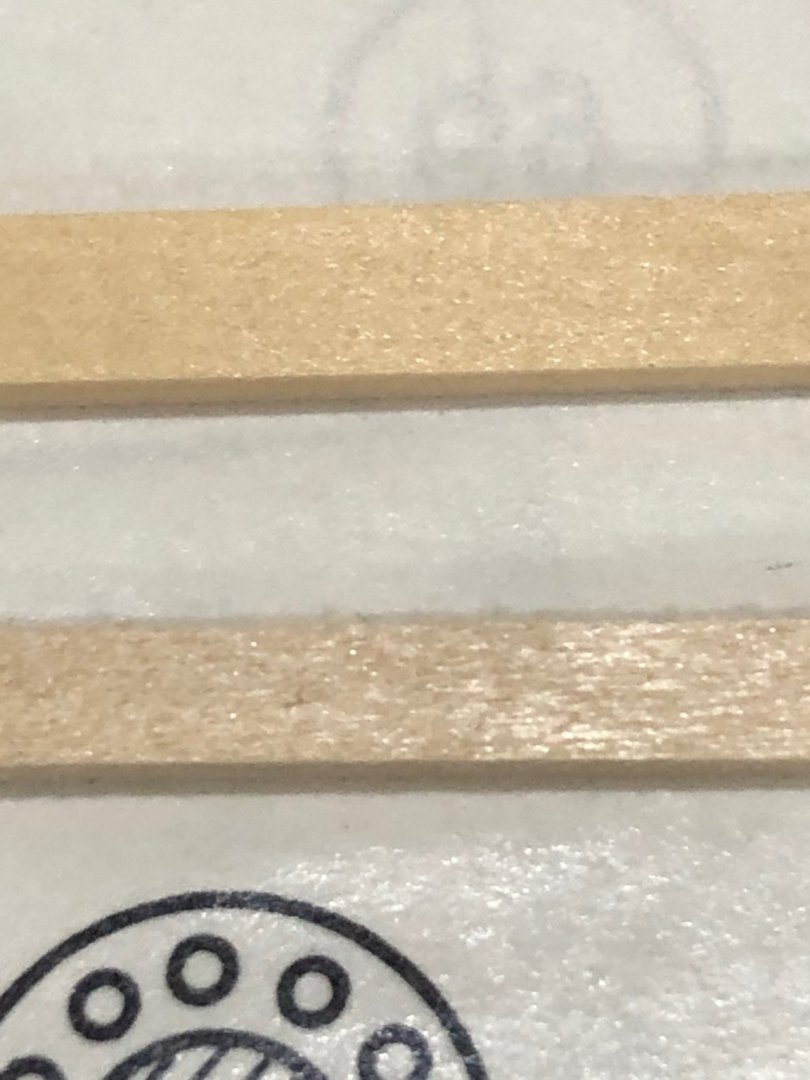
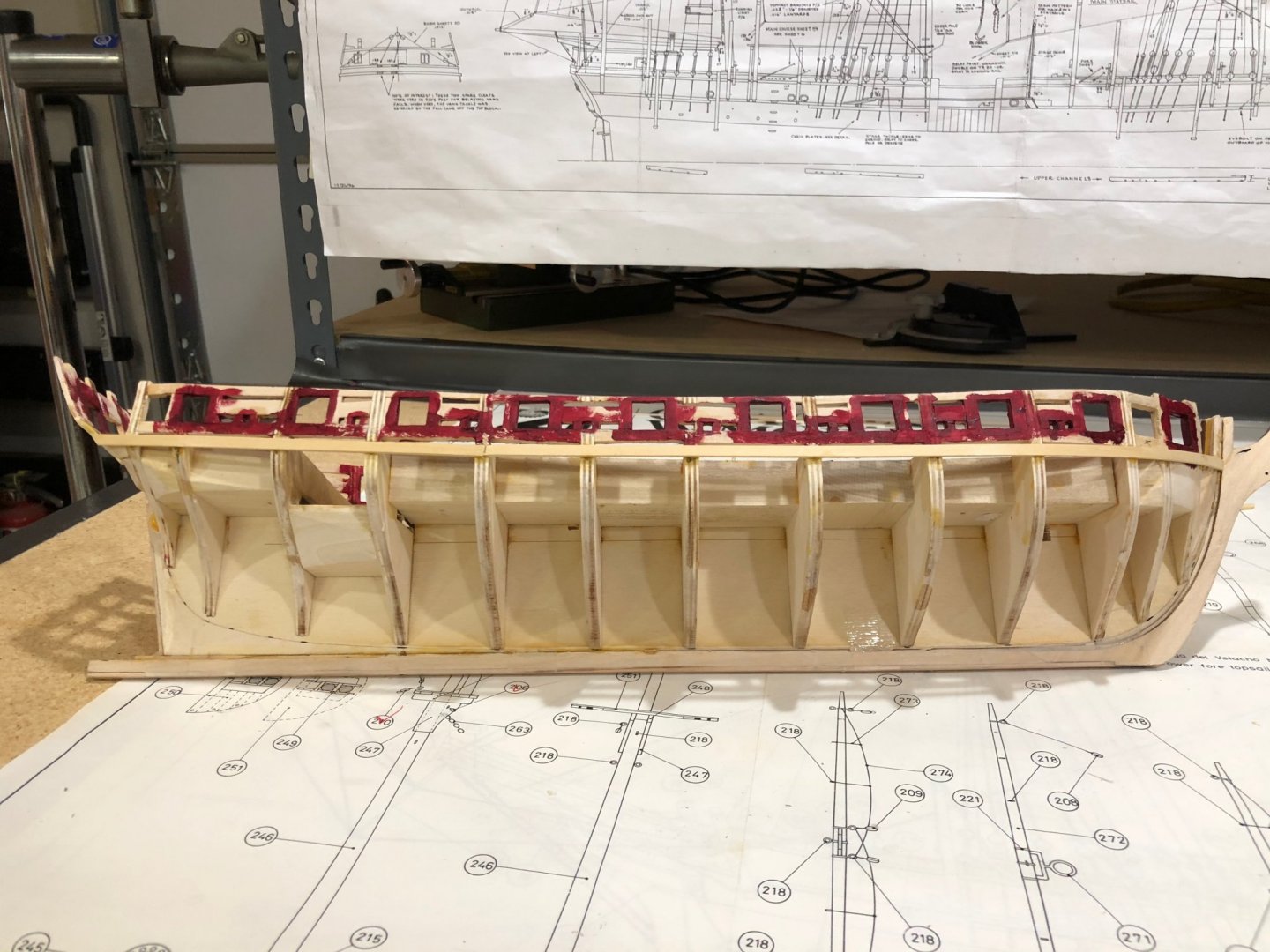
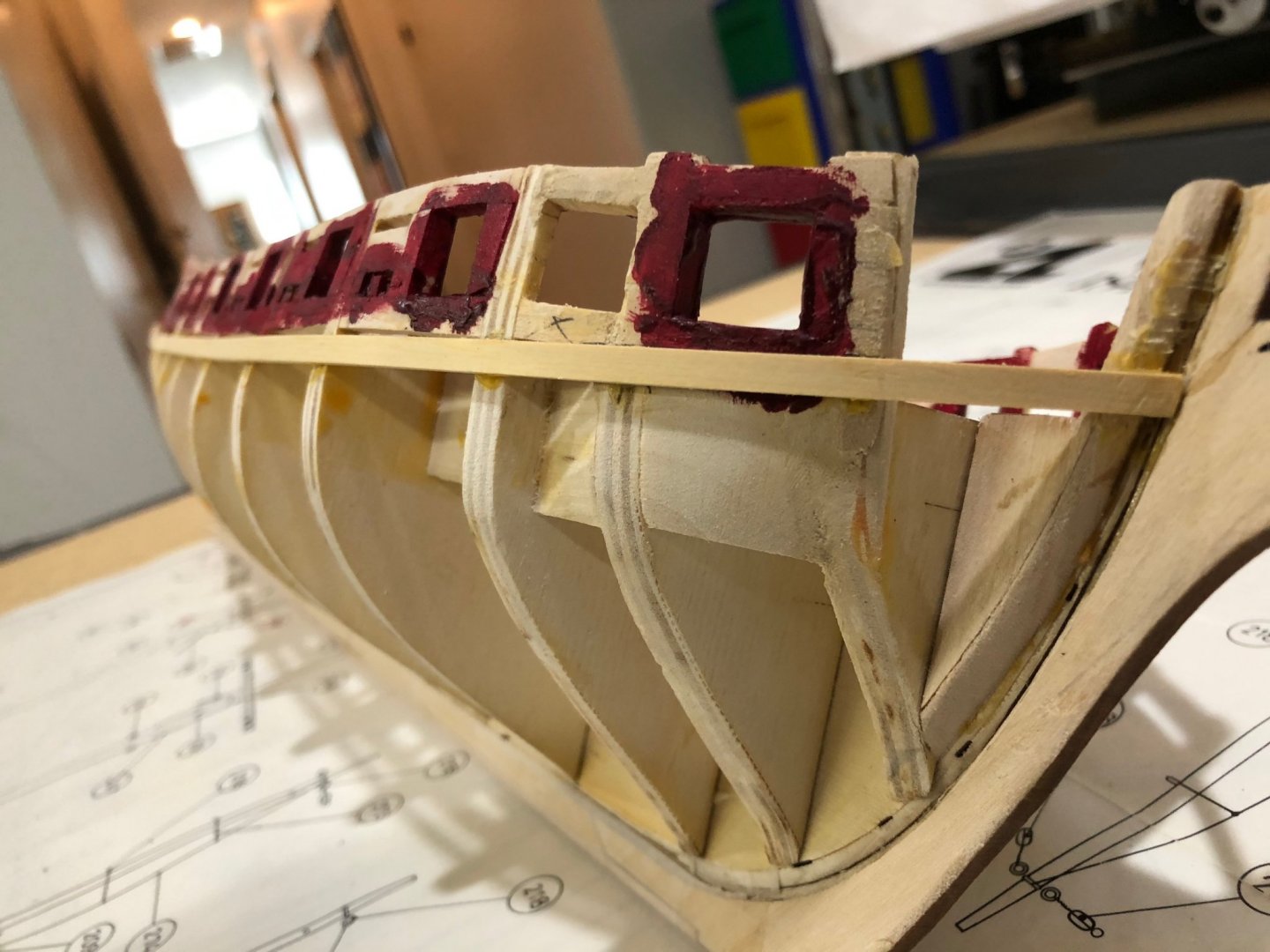
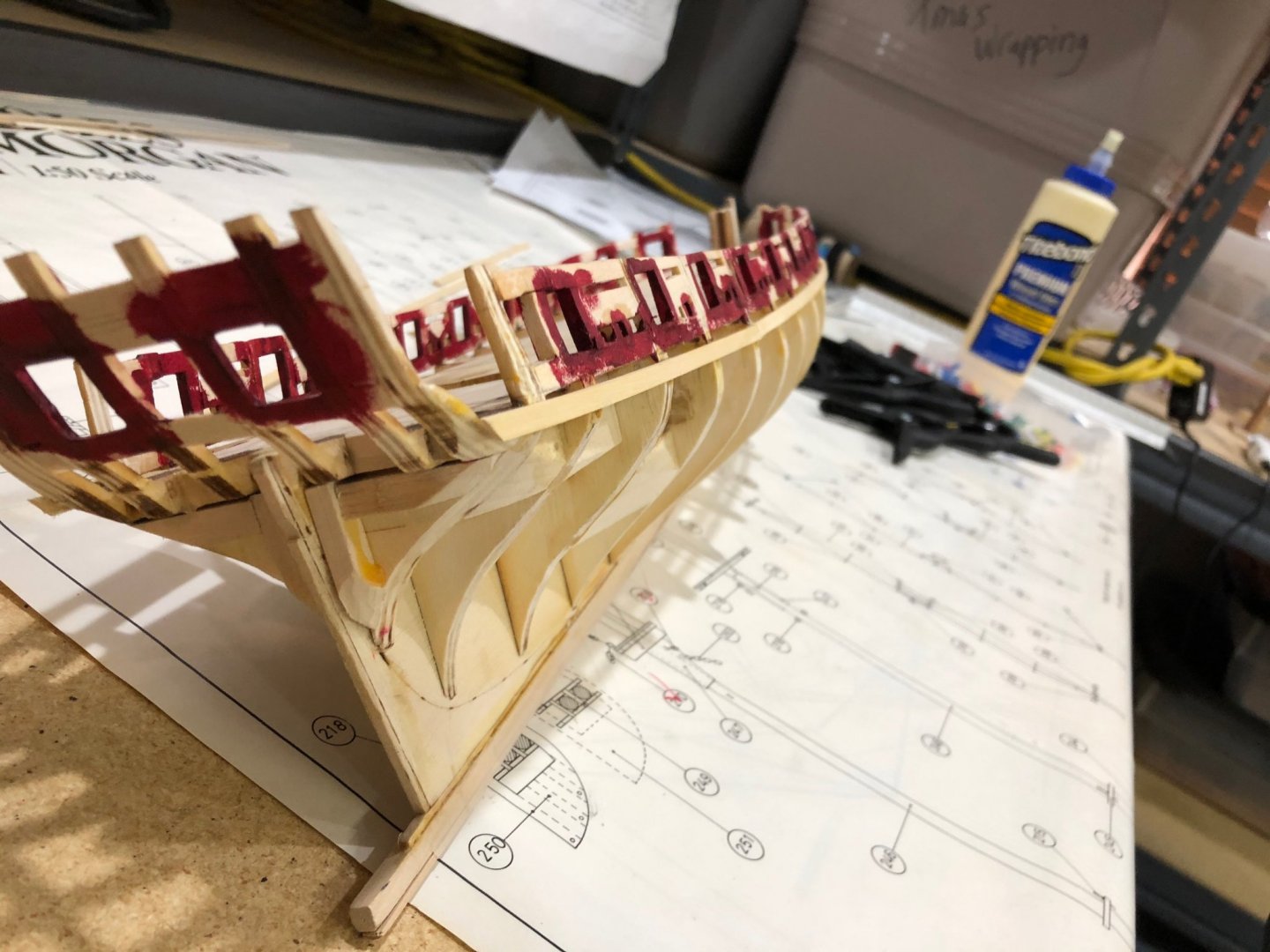
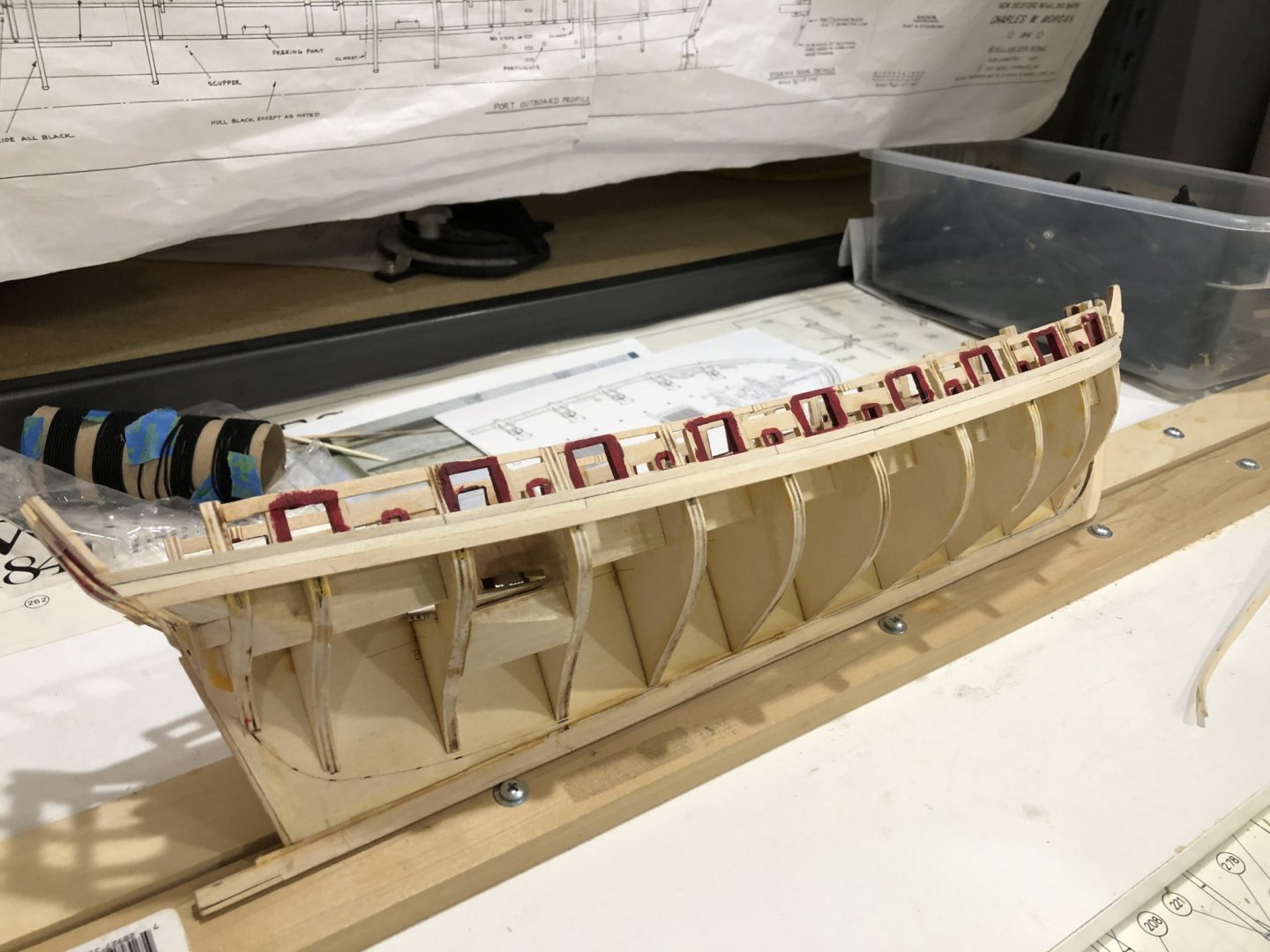
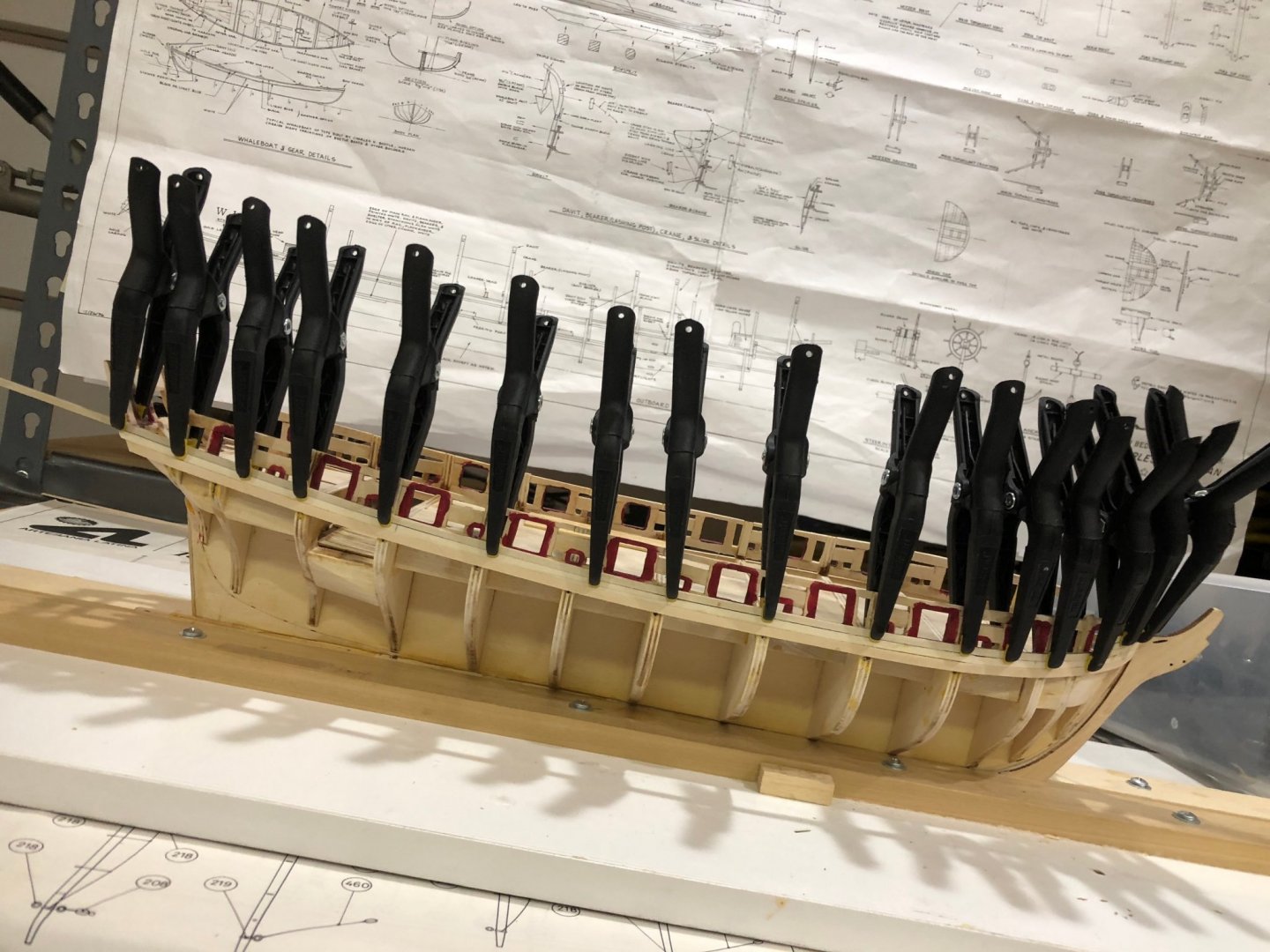
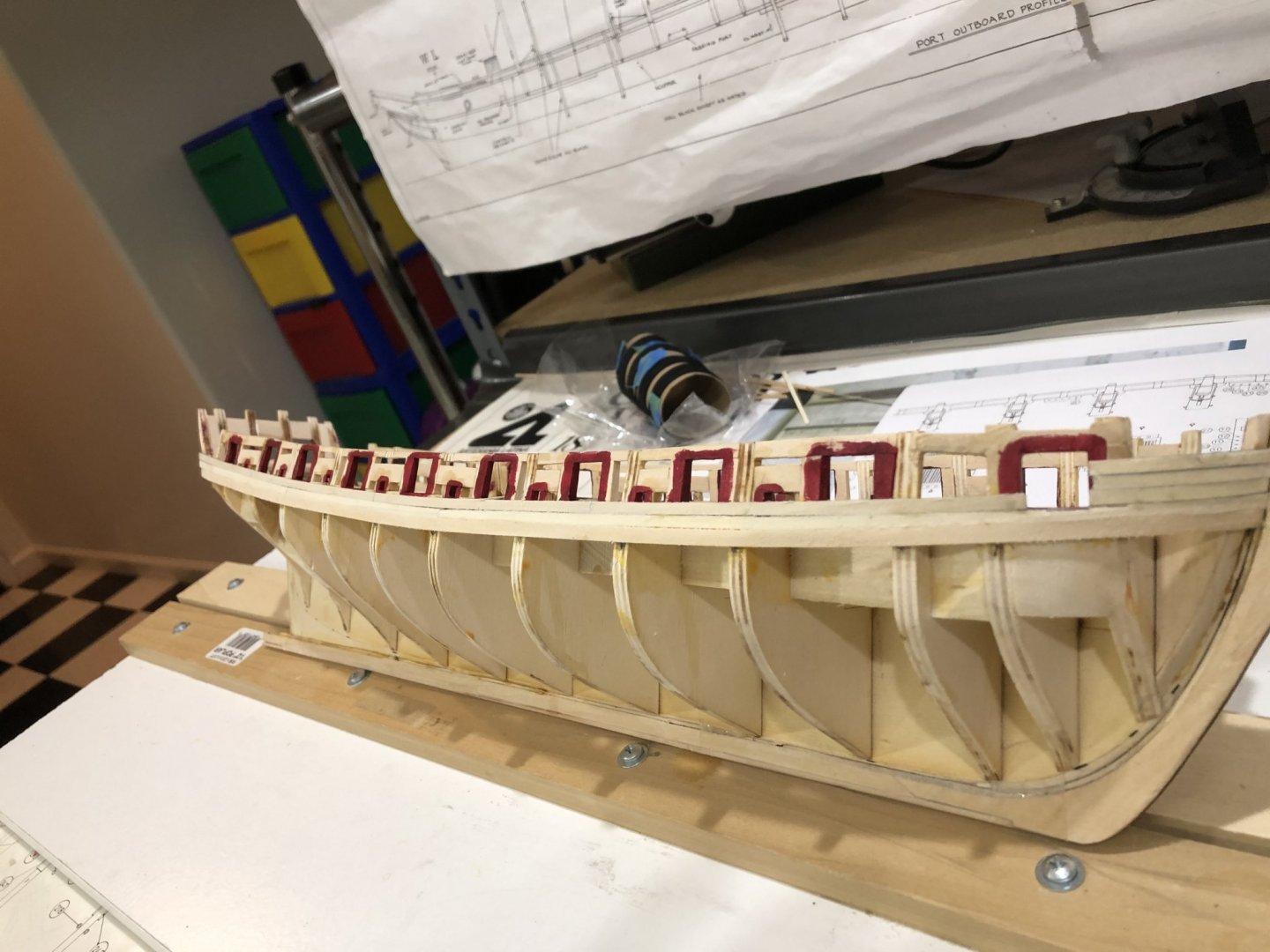
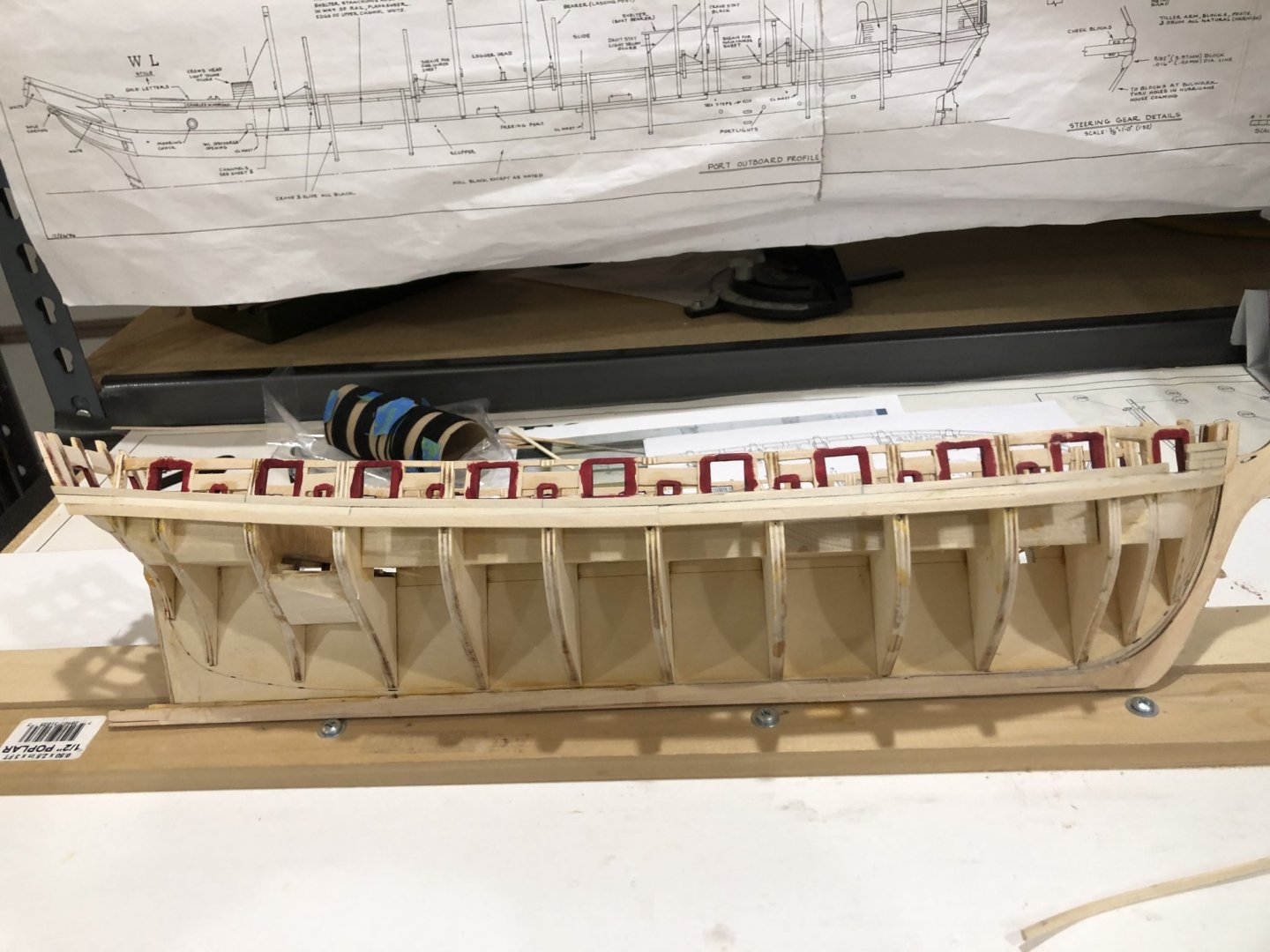
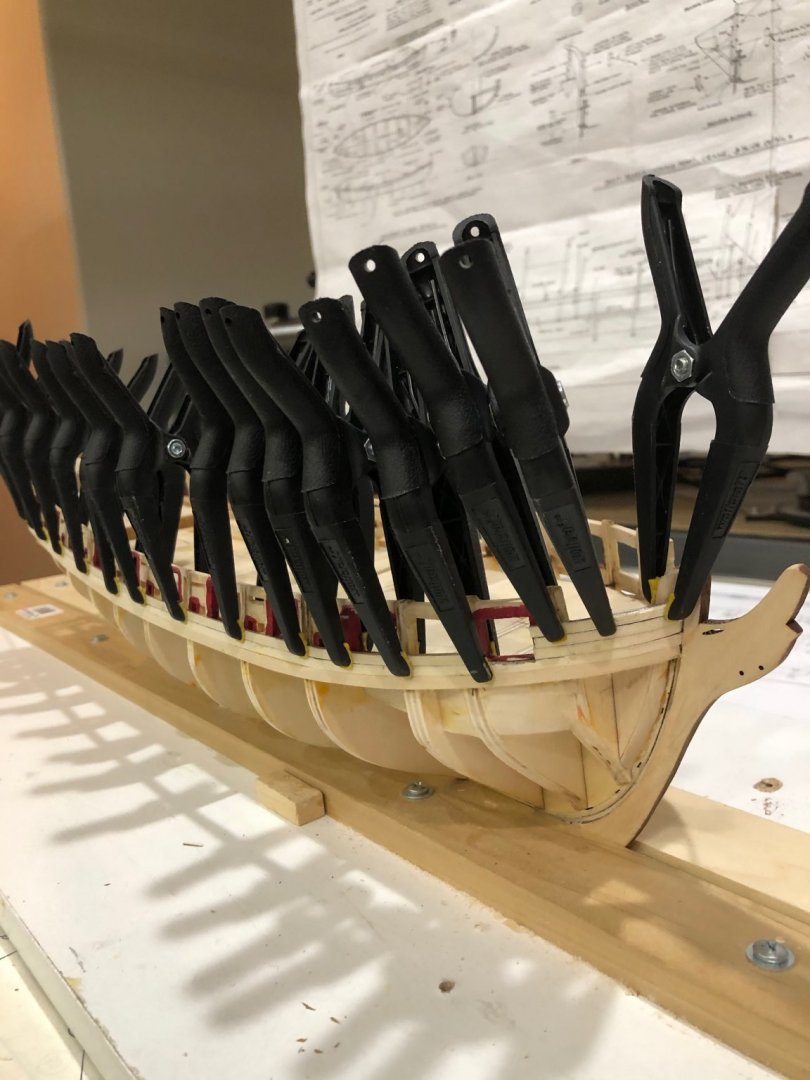
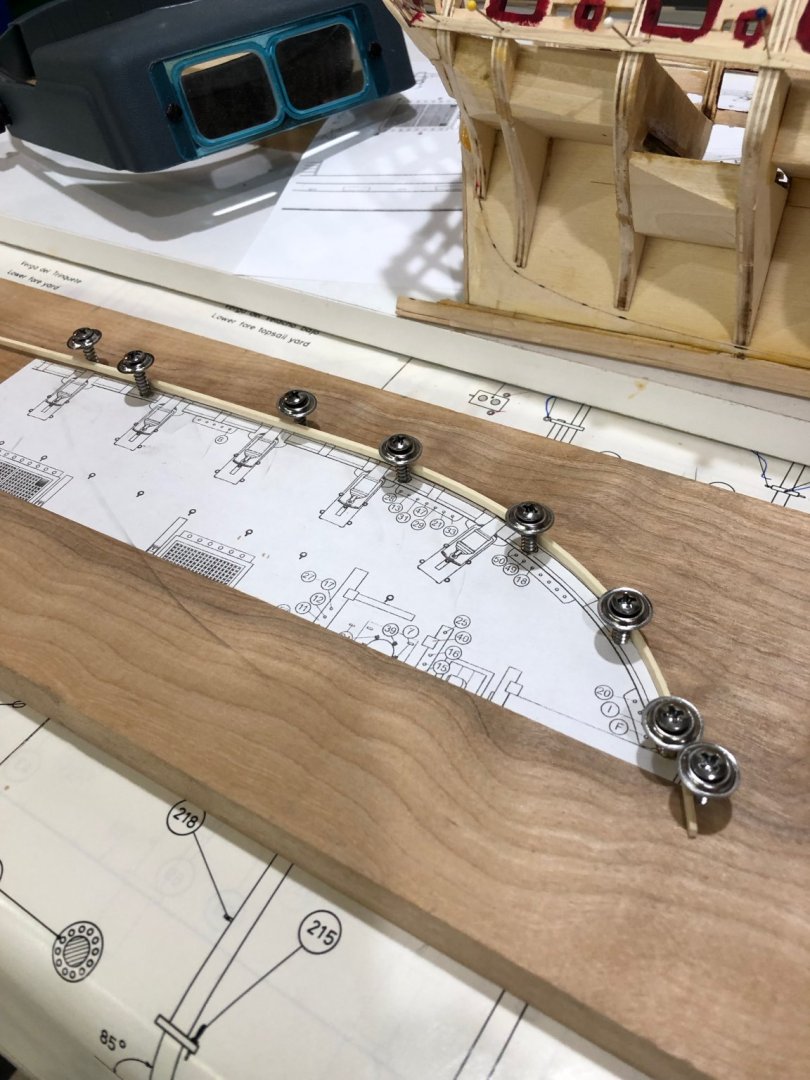
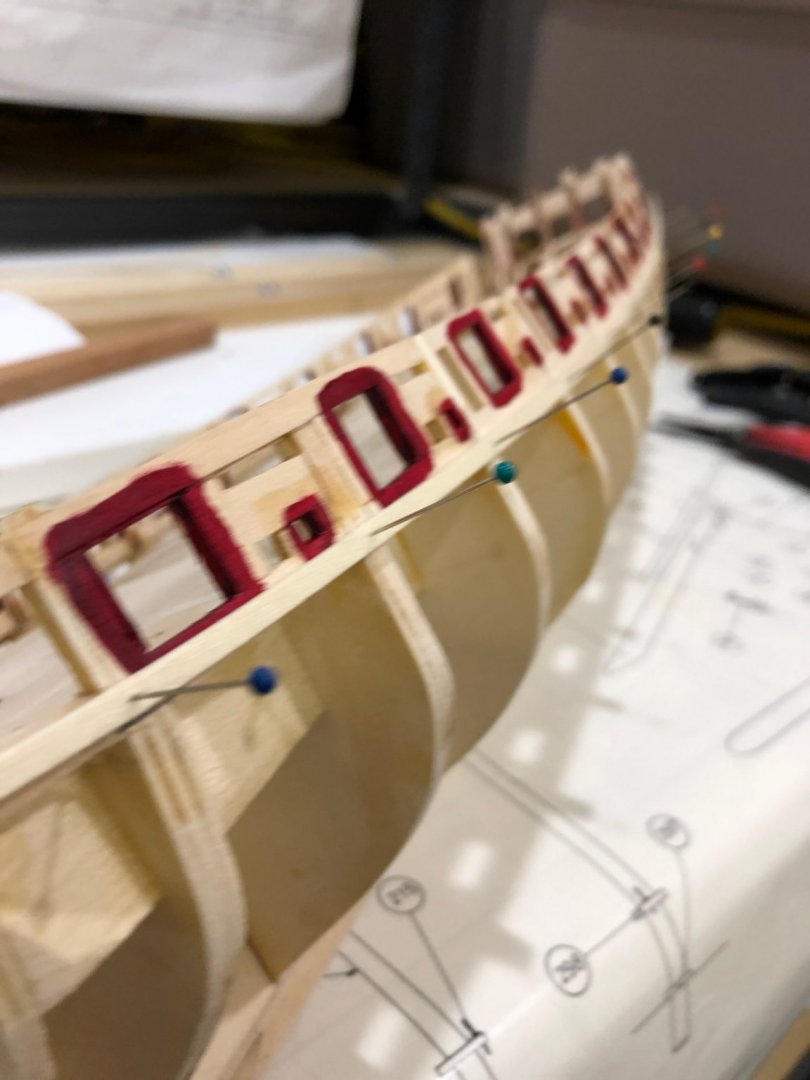
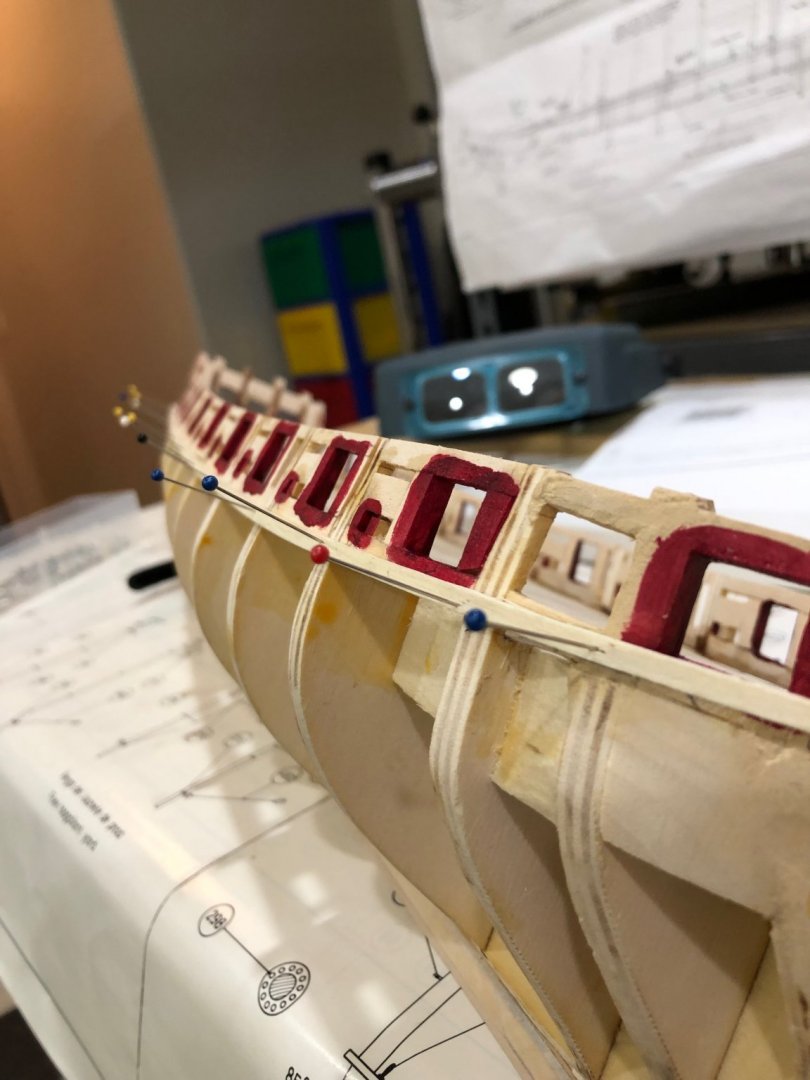
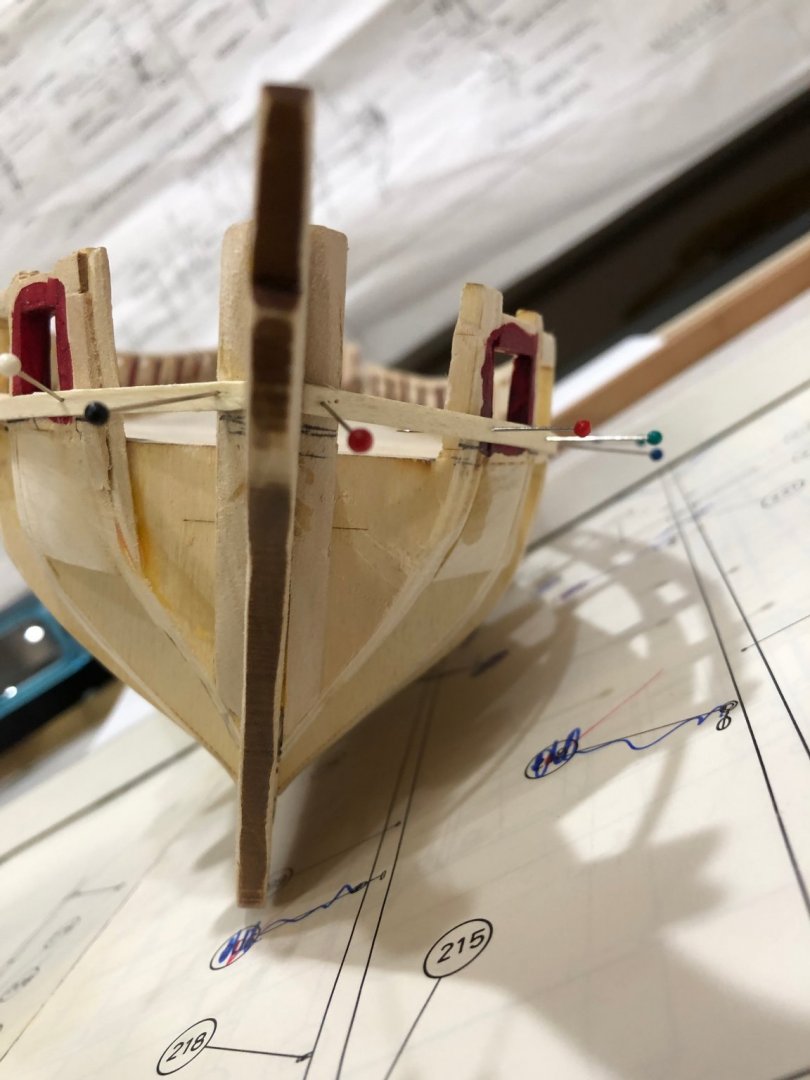
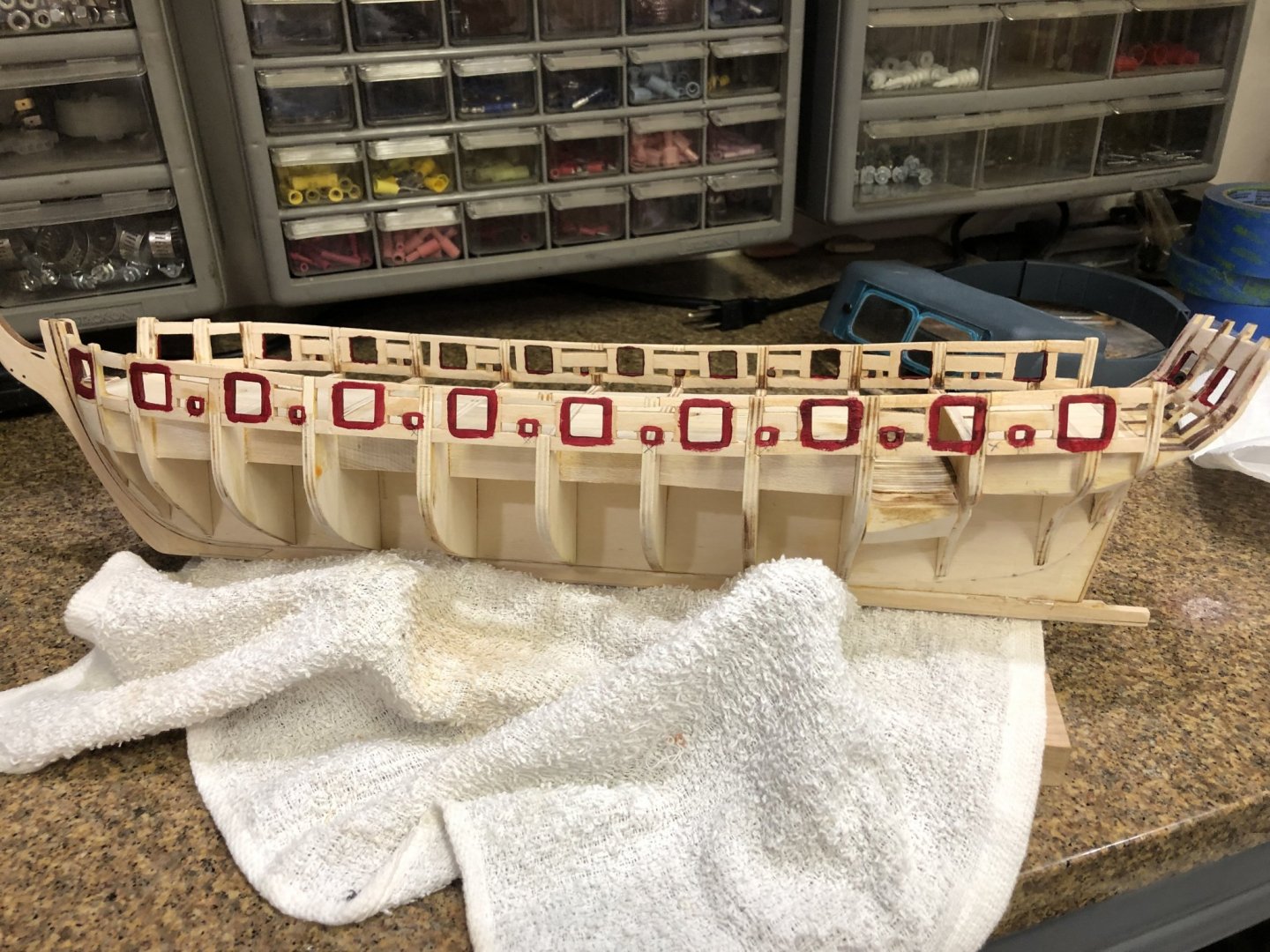
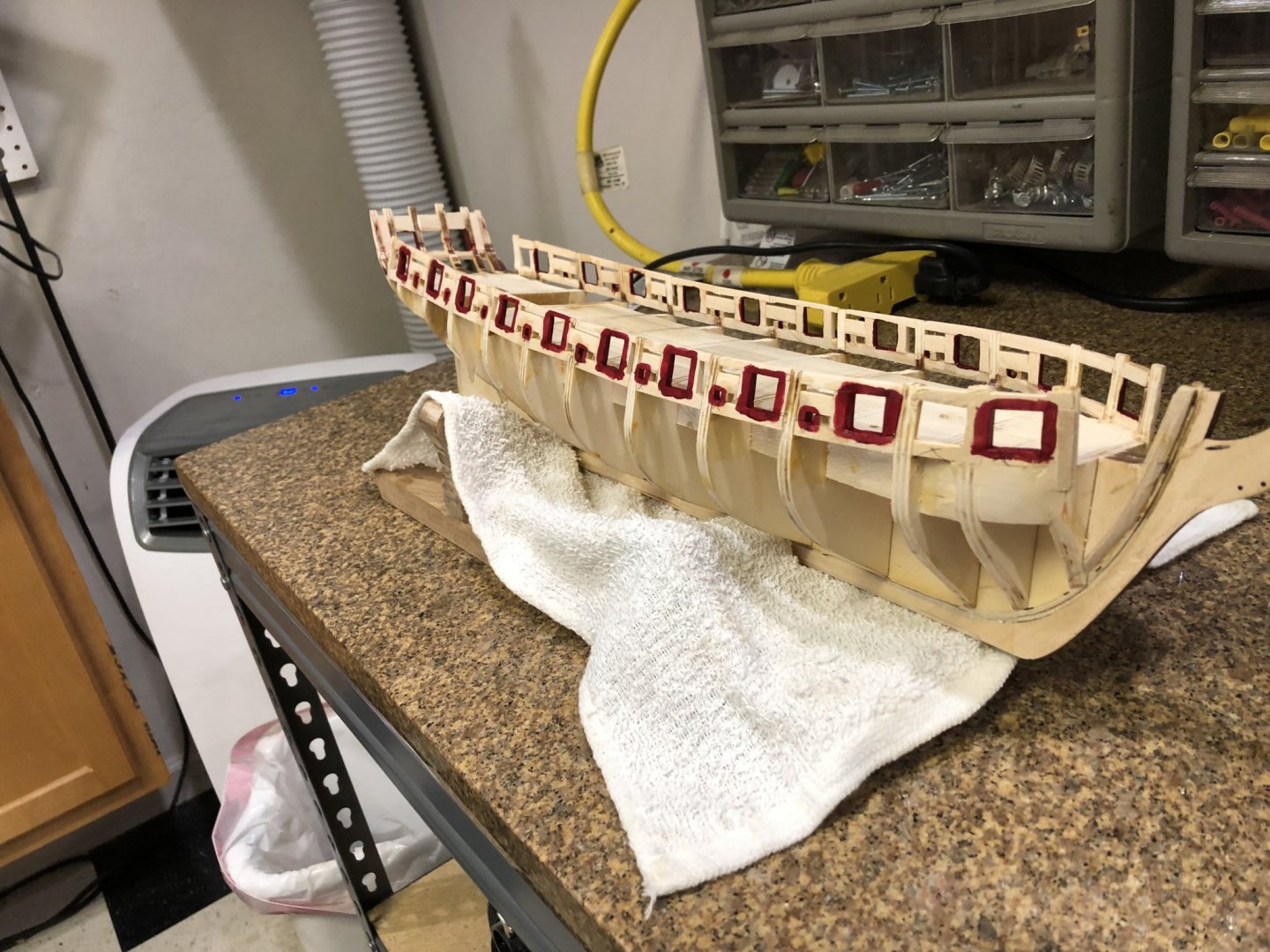
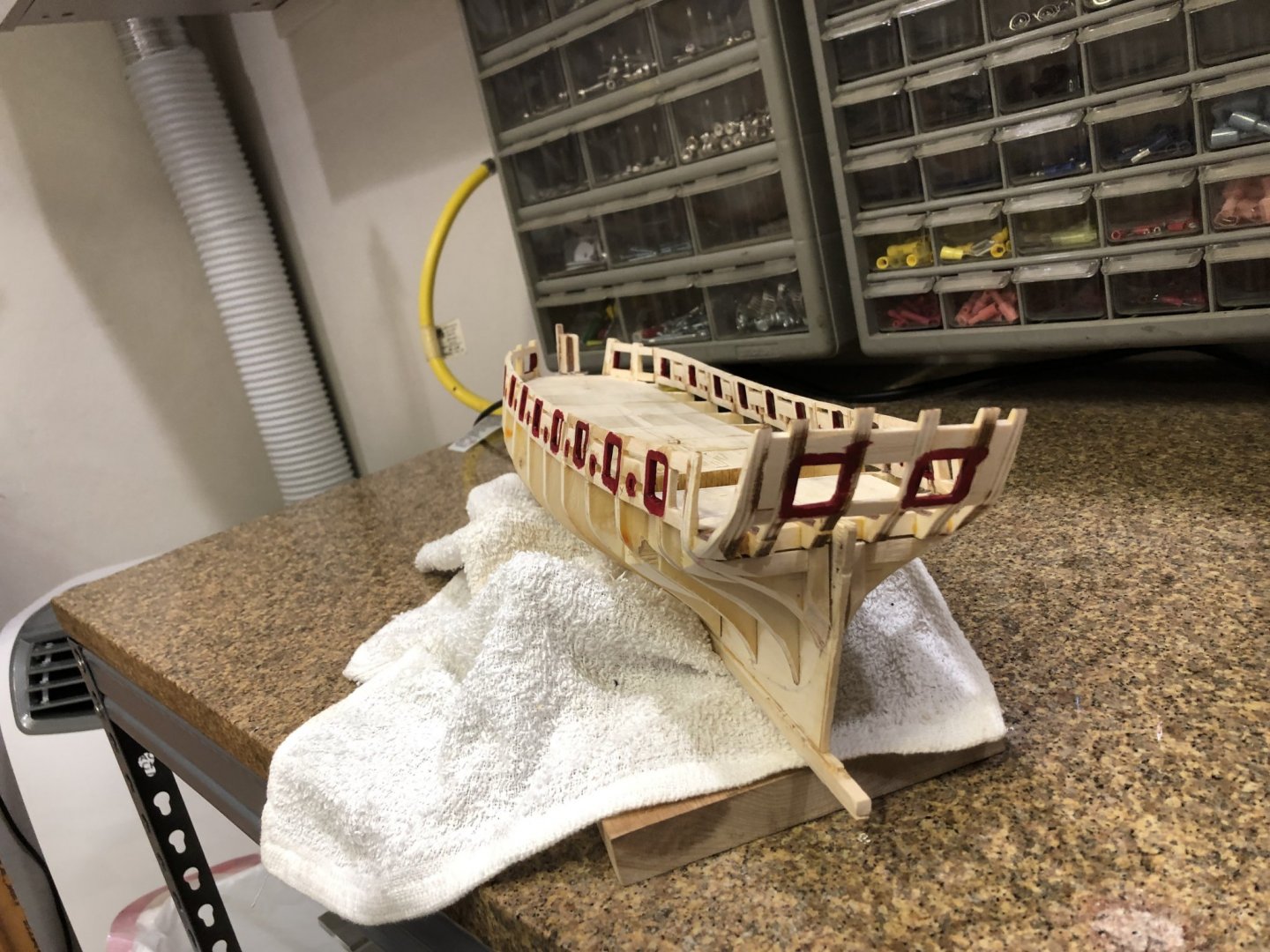
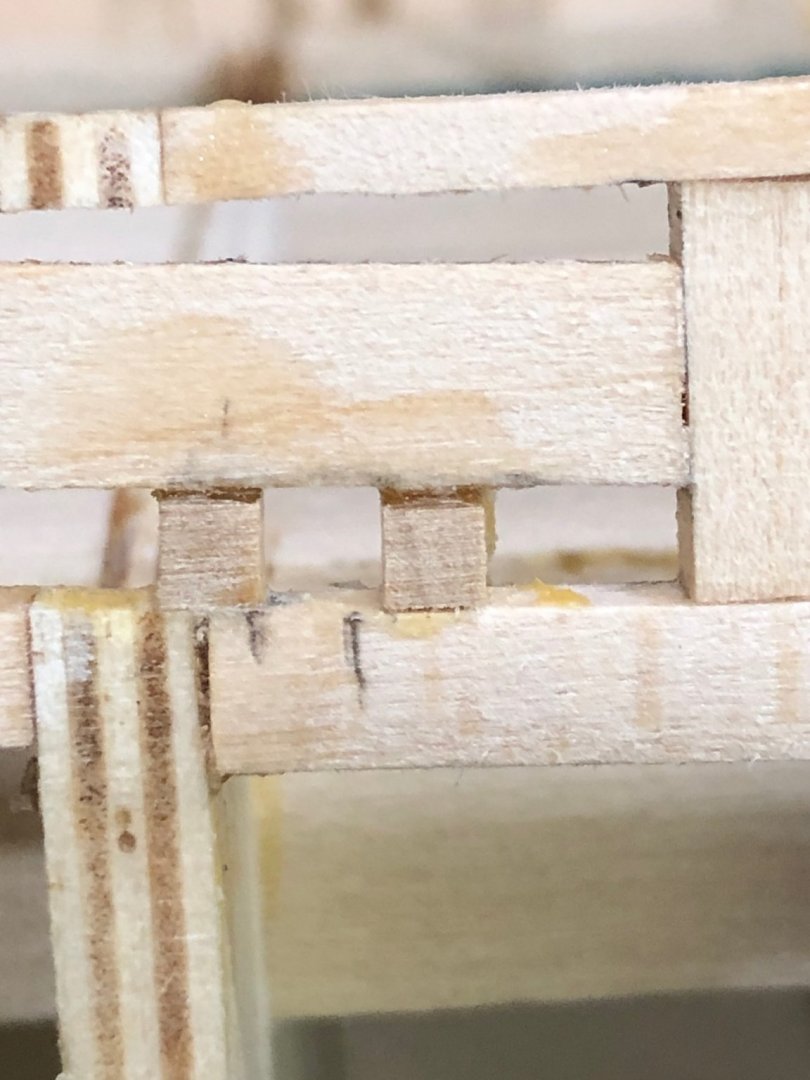
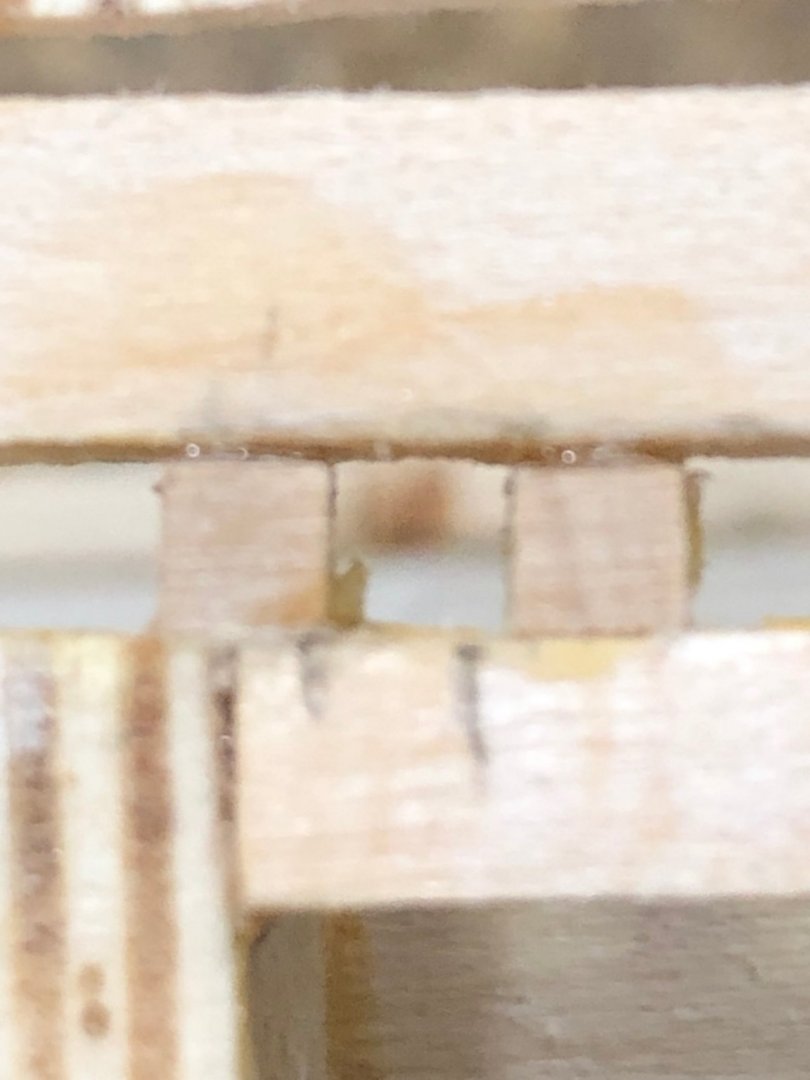
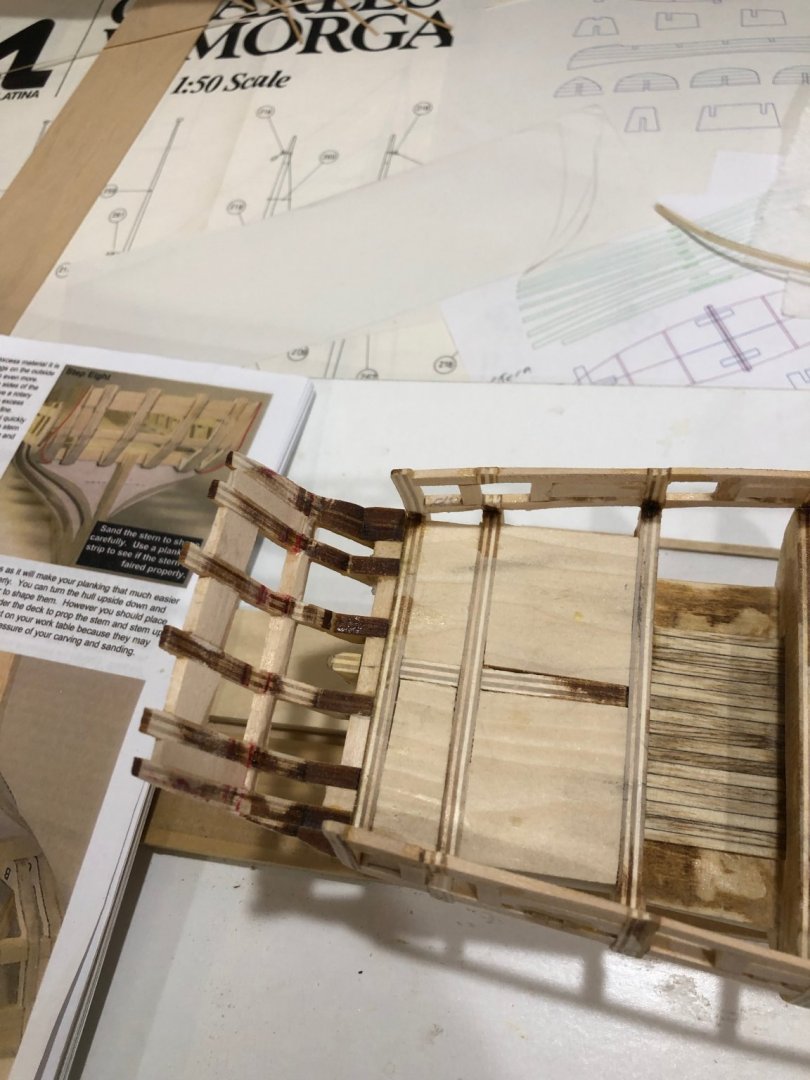
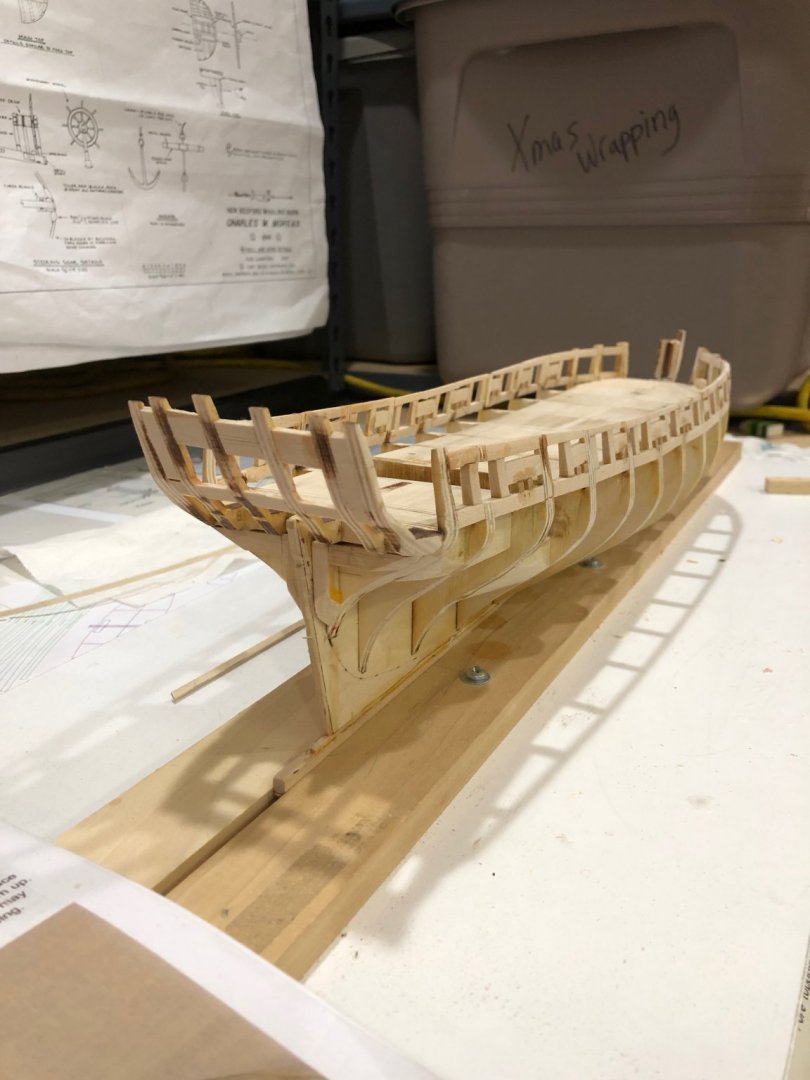
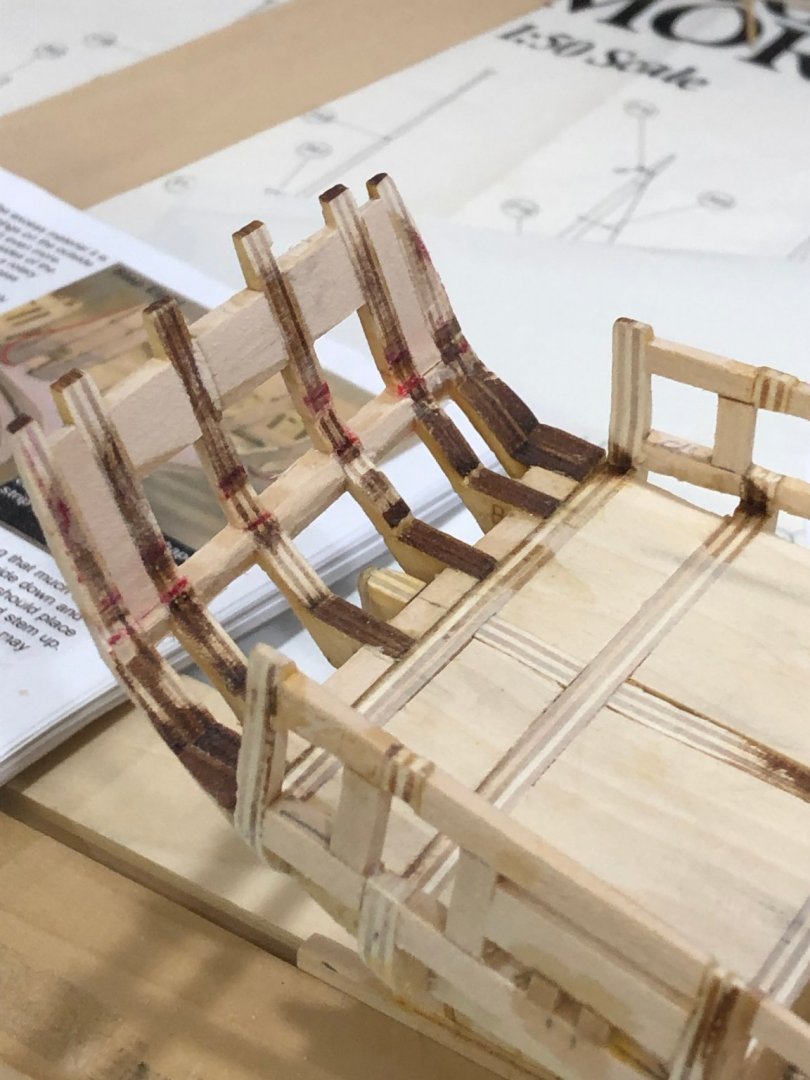
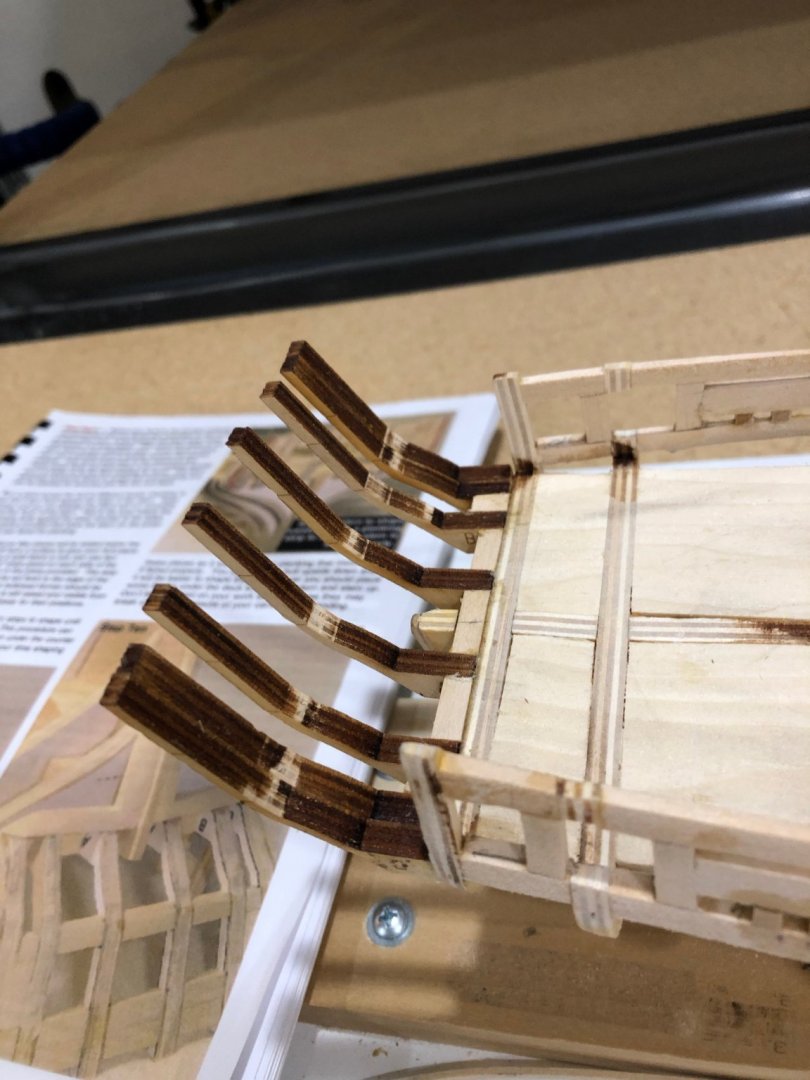
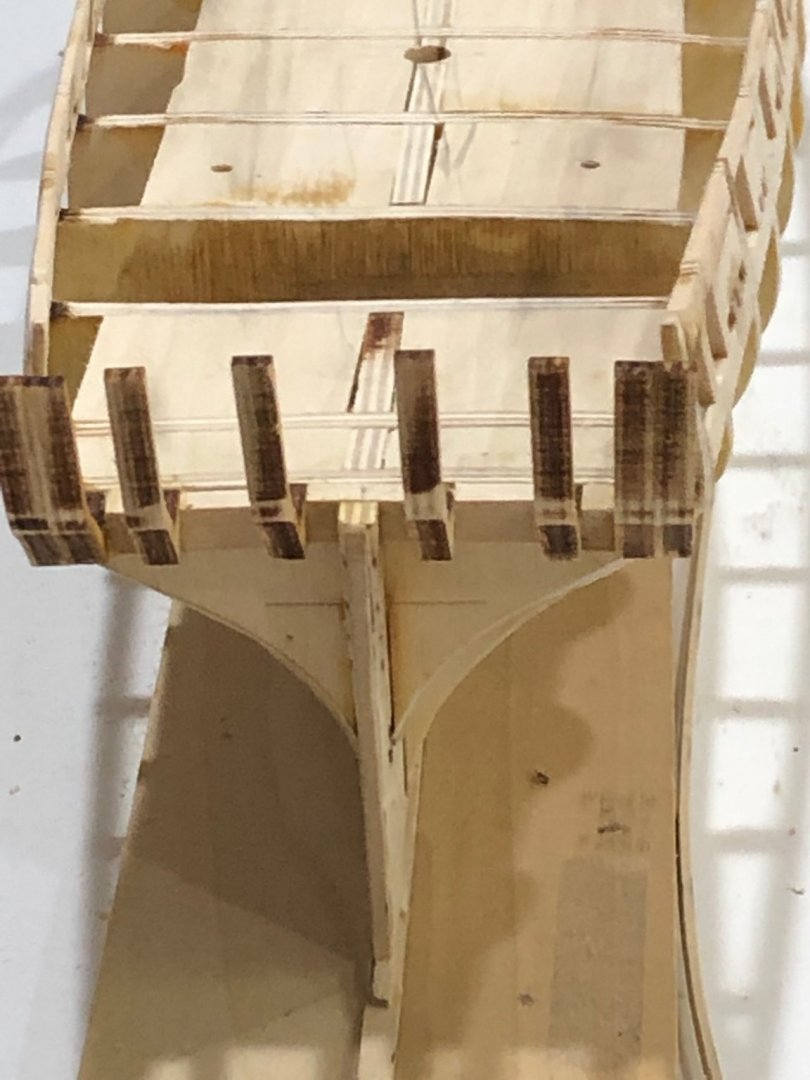
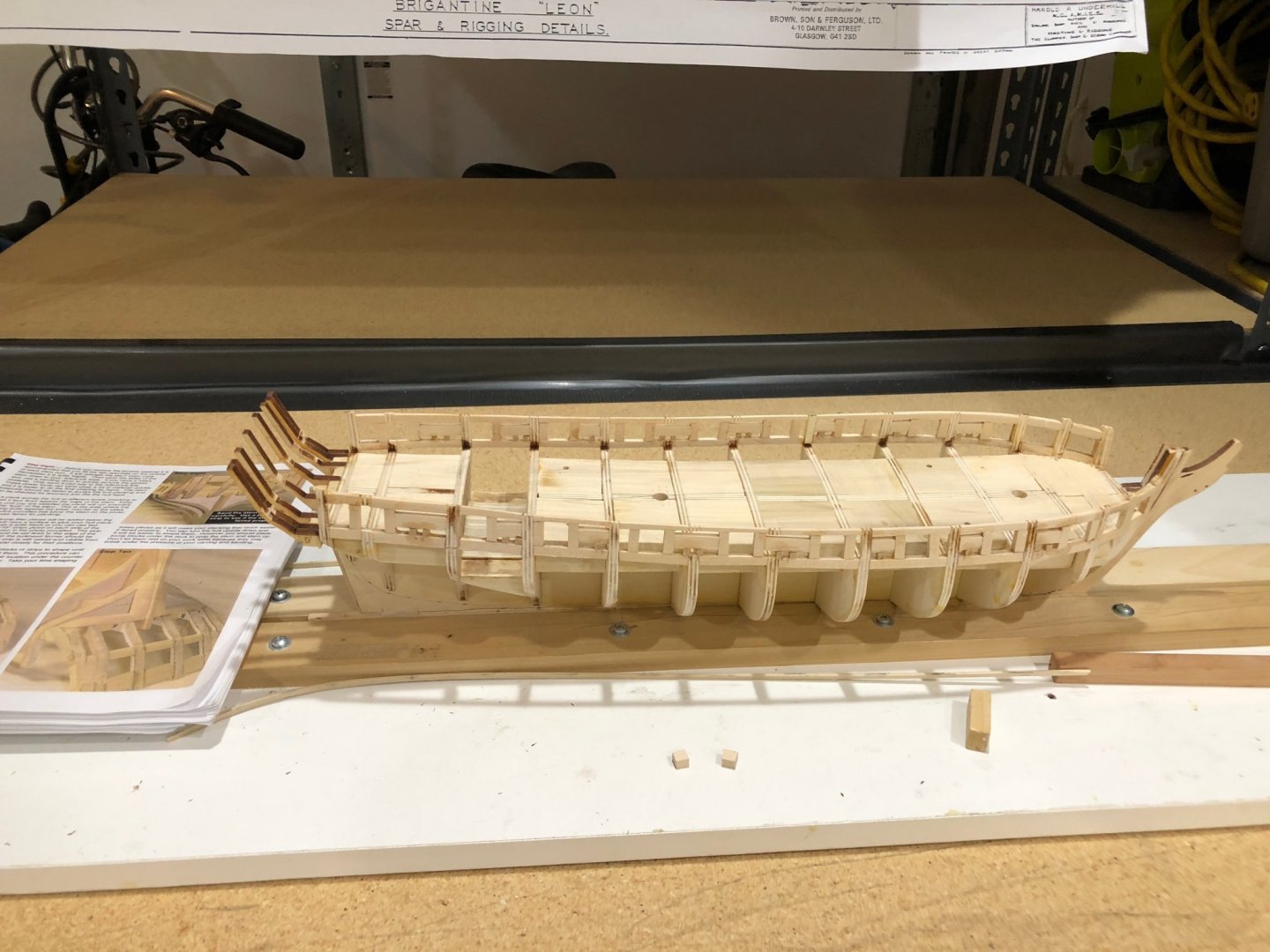
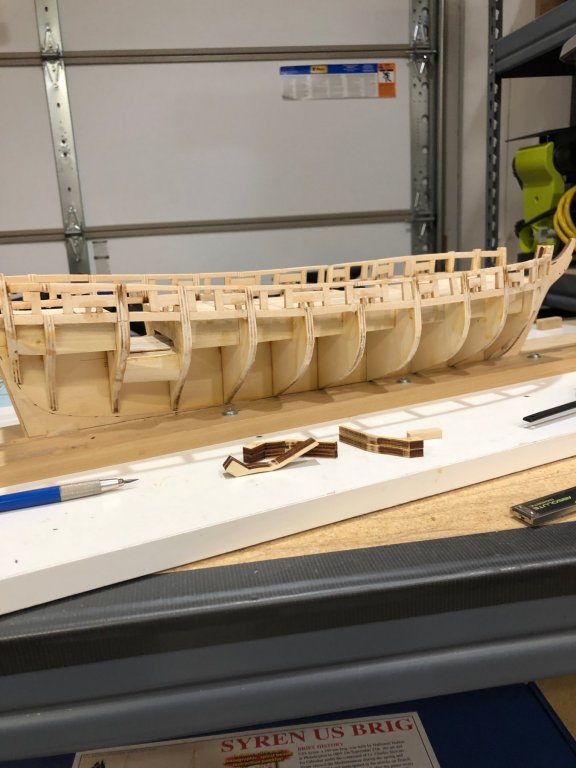
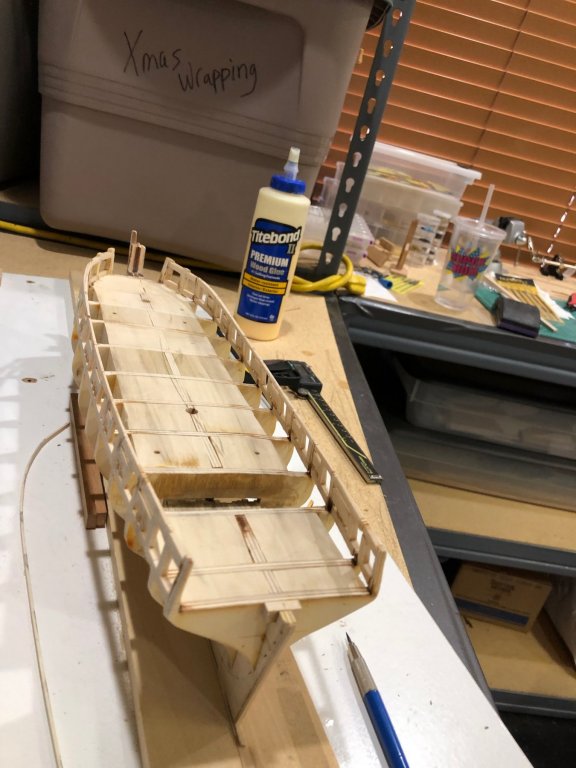
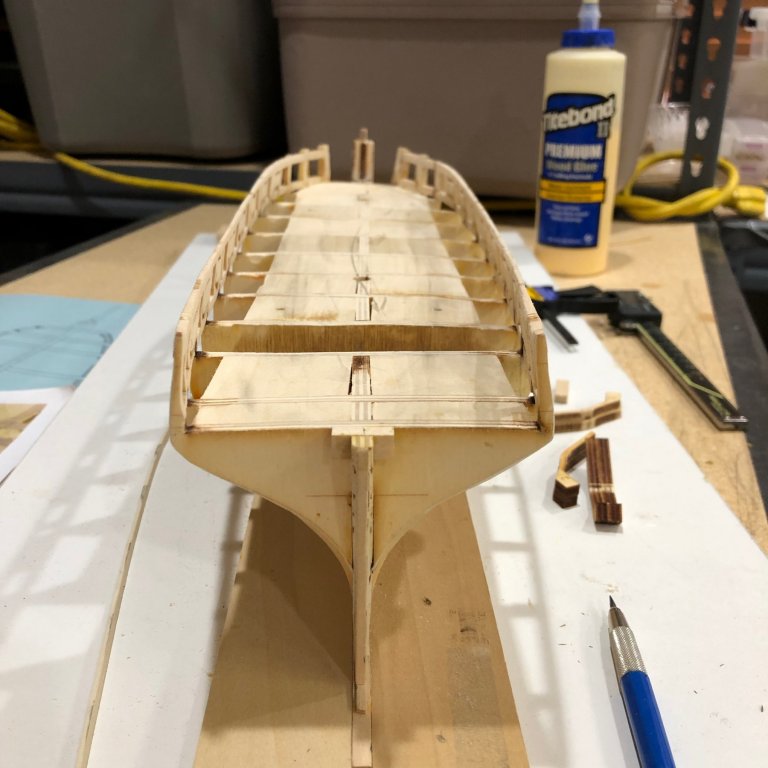
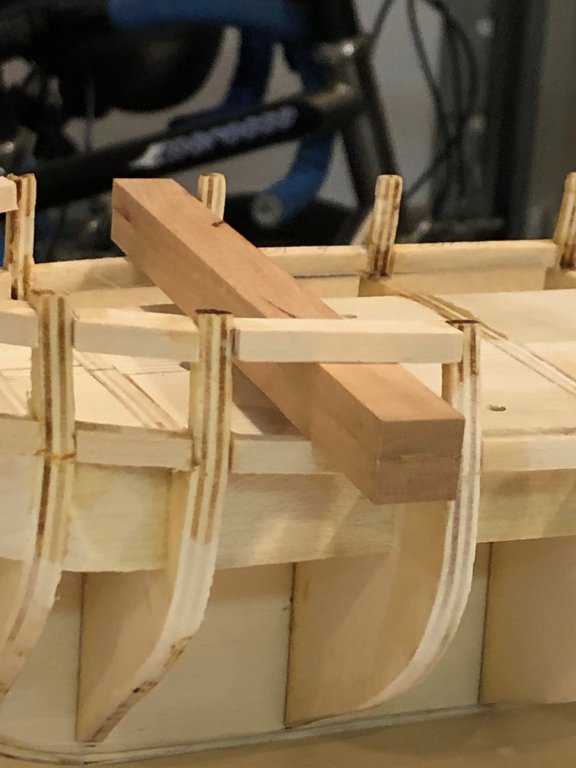
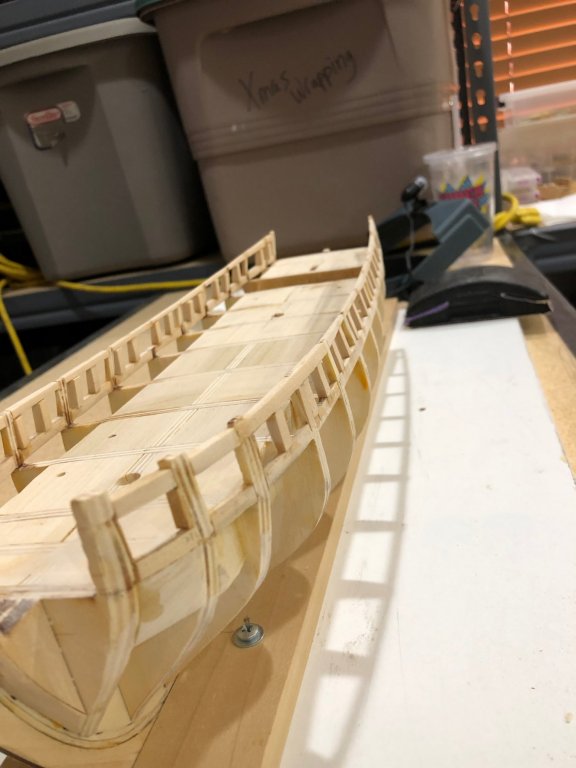
Syren by JesseLee - FINISHED - Model Shipways - scale: 1:64
in - Kit build logs for subjects built from 1801 - 1850
Posted
Jesse Lee I started following your log just the this last weekend to learn more as I'm building a Syren. I'm up to hull planking. I've learned many things to use on my Syren and want to thank you for your wonderful build and log. Really enjoyed reading and looking at the photos. Can't say enough about how wonderful the ship looks you've done an amazing job creating something to strive for.
Willdf